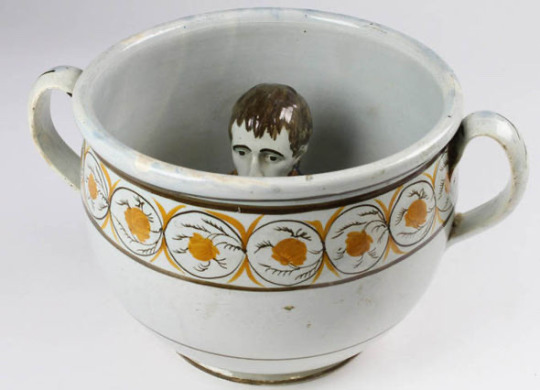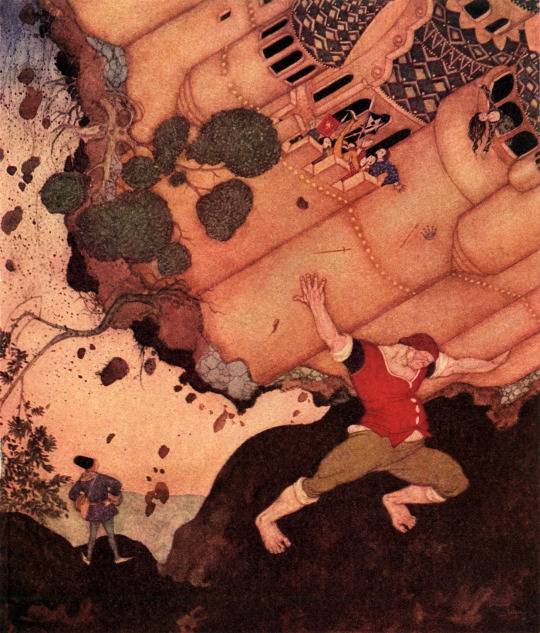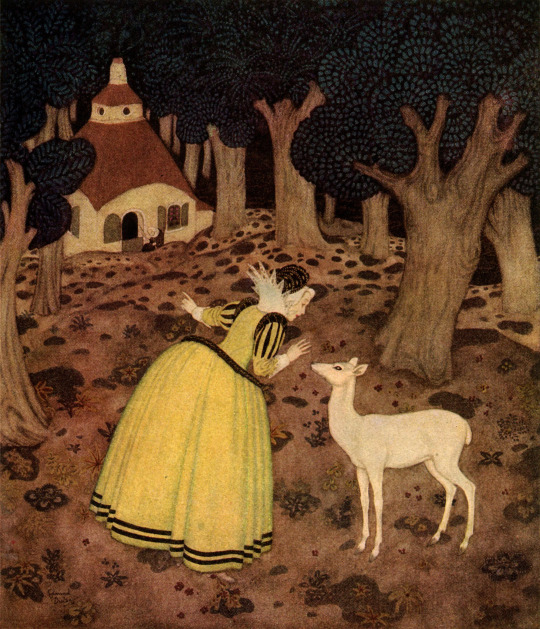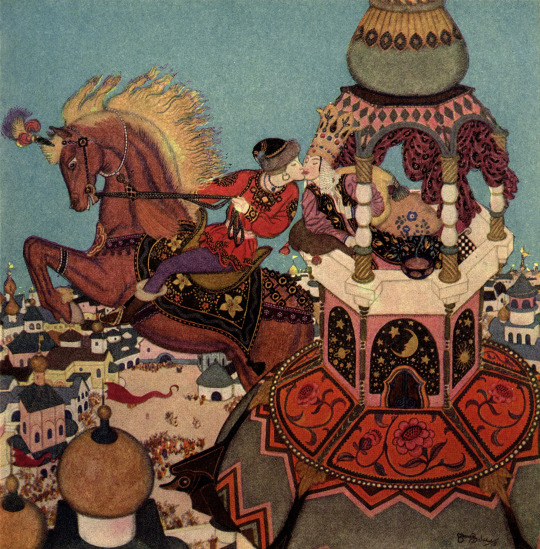#french propaganda
Note
Hi! I have a little game for you. Here's a list of words:
ratrapáž
montáž
antuka
angažmá
šumafuk
garnýž
ležérní
All of these are real Czech words that come from French. All...except ONE that I made up. Can you guess which one is the fake one I created? :D
YIPPIE! i love games!!
so here are my first ideas: trying to pronounce czech although i have no idea how the inverted ^ sound (between others) and here is what i think
ratrapáž = rattrapage
montáž = montage
antuka = antique (seems kinda strange but why not)
angažmá = ??? engagement??
šumafuk = ????????????????
garnýž = garnir / garnish (english) (unless ý is NOT pronounced i at all lmao)
ležérní = laser (??? aint that english)
so im stumped on 4, 5 and 7 for starters. so . disadvantage.
second idea: what already exists and is borrowed
like montage. it is also a russian and english borrowed word so i'm for sure crossing montáž (2) out. same for antuka (3), angažmá (4) and garnýž (6) cuz it'd be a giveaway wouldn't it
third idea: CHEAT and have a czech voice synthétiseur tell me how the words sound
ok so i still have no idea what šumafuk (5) is. and i guess ležérní (7) is like léger/légèrement or something so it enters the 2nd idea category: OUT (also i double checked angažmá (4) and it do be engagement so we good)
fourth idea: overthink it
since šumafuk (5) seems so far stretched that i can't recognise it, it can't be it cuz you'd make up an easier word. so it is out.
so we're left with (1), ratrapáž/rattrapage. which is a very strange for you to come up with ... since it's not a common one... but maybe you're trying to throw me into a loop ... mmmm ...
fifth idea: overthink it MORE
considering it's a game you want to fool me so youre gonna make the word look like another from the list. or make it have czech letters cuz "if it has czech letters it's definetly an existing word". do you think i'm so credule. who do you take me for.
anyways i think you made up ratrapáž and i can't wait for you to prove me wrong and for me to learn more <3
#ask#frens#ITS SO FUNNIE!!!#i had kinda the same idea too but wit my english frens omg!! how the brains connect!!#thamks i had fun hehe#rambling#linguistics#french propaganda#& czech propaganda
37 notes
·
View notes
Text

i feel the need--the need for speed!
#top gun#pete maverick mitchell#nick goose bradshaw#top gun goose#top gun maverick#pete mitchell#nick bradshaw#this is NOT military propaganda i PROMISE#i ended up liking these movies way more than i thought so bear with me but know i'm not drawing these like#oh huzzah us military because i am NOT :)#we watched the first top gun and i went into it with the only thing i knew was that goose died and if i hadnt known that spoiler i wouldve#been DEVASTATED he was such a good character#also the first movie was...okay i guess#the amount of french kissing was FRIGHTENING and my entire family screamed and covered our eyes lmao because wtf was that#also i realized maverick tossed goose's dog tags into the ocean in the one scene but that means rooster lost his father and doesn't even#have his dog tags to remember him by?? idk that was whack mav lol#top gun fanart#digitial art#artists on tumblr#illustration#csp#clip studio paint#tom cruise#anthony edwards
352 notes
·
View notes
Text
Absolutely reeling.
So I knew that the origin of "Hector was a great man, moral, noble, better than all of the Greeks" began as Roman propaganda that somehow has made it to now, the year 2023, and is still taught to high school students.
What I did not know was why scholars shit on Achilles as vehemently as they did (and still do).
My copy of Fagles' translation of the Iliad has a preface by a different scholar who I'm not going to bother to name because he's an idiot (and idk probably dead at this point). I read the entire thing, absolutely baffled, because he would cite a part of the text (that I admittedly had not read yet! at all!), quote it, and then come to the most batshit interpretation based on that quote I had ever seen in my life. His general take was that Achilles was a sociopath who had no feelings for anyone other than himself and his own pride, and every action he took (until welcoming Priam into his hut) was done in service of that pride. To support this, he decided that Achilles did not see Patroclus as a person, but rather as an extension of himself, and thus someone injuring Patroclus was them injuring Achilles, and so he did not care about Patroclus, he only cared about his wounded pride.
Yeah.
That sounded wrong before reading the book, and while reading the book all i could think was, "Did we read the same fucking thing???" Put in context, those quotations still did not support his conclusions whatsoever.
But i cracked open Caroline Alexander's "The War That Killed Achilles" last night, and she solves this mystery of "Hector good, Achilles bad" for me right out the gate (which is good because so far I've only read the preface).
Western Europeans by and large learned about the Trojan war from Roman stories, which became fairly popular, and not the Iliad, which was not translated into French or English until centuries later. As mentioned, these were propaganda that cast the Trojans in a much better light than the Greeks because the Romans believed they were descended from Trojan refugees. This starts a trend that is still going on in scholarly circles as casting the Iliad as a war between "barbaric Greeks living in a shitty, lawless camp" vs "civilized, educated, weaving, real-wife-having Trojans," making the Iliad a tragedy in which Homer for some reason skewers his own people and their warlike culture as barbaric while propping up a dead, foreign city-state. This interpretation is still extant and was the postscript to another copy of the Iliad I have.
According to Alexander, scholars closer to Homer's time saw the entire war as a tragedy--both the destruction of Troy AND the destruction of the Greek army. While this is not covered in the Iliad, very few Greeks actually made it home after Troy. Some that did were then outcast (Teucer for example), some were murdered (bye, Agamemnon), some went on to create new kingdoms in other places (Diomedes), but by and large, there was no going home from that war. There was no great victory with all their loot. The entire thing was a disaster for both sides, spurred on by fickle gods.
Back to the more recent European interpretations of this story, one reason Hector ended up cast in such a "good" light, despite being a dumbass who wants to dishonor dead people just as badly as Achilles ever did, was in order to make Achilles look worse. Why was it important that Achilles becomes a villain in this story in which he is very much not a villain? Because Europeans were involved in so much war with each other and the rest of the world that a young, insubordinate man who criticizes his idiot of a commander, decides his life isn't worth throwing away for this war, and refuses to fight to sack a city was an affront to their values. Young men were to be obedient, follow their commanding officers, and colonize the world for queen and country. Achilles suggesting losing his life is not worth it to prop up Agamemnon's war is a dangerous precedent for all the good little soldiers needed to make their nations wealthy.
It's almost funny that these analyses propping up Troy as a beacon of civilization were made by people living in countries so bent on colonizing the world. They identified with the city being sacked and not the greedy sackers of said city, who they were much closer to. And Achilles, educated, morally rigid, emotional Achilles, is recast as a sociopathic asshole who doesn't care about anyone other than himself, unlike all of those other beacons of selflessness among the Greek leadership.
The tragedy of the Iliad is that Achilles is right, the war is pointless, Agamemnon did dishonor the shit out of him, and it doesn't matter because he's going to die in it anyway.
Frankly, given how badly his character has been interpreted for so long, I think the muses owe him an apology.
#the iliad#achilles#I have only read the preface of this book#hope yall like essays#writing essays at 6am and hoping they are grammatical#haven't even had my coffee yet my head is too full of achilles#also a hefty chunk of it was FRENCH propaganda like come ON
2K notes
·
View notes
Text
Soap : Is something wrong with Price? I don't think I've ever seen him in such a bad mood!
Ghost : Even when you accidentally blew up the unauthorized explosive experiment you were illegally working on in your room?
Soap : Even then! And he wasn't that pissed off, he was more.... Disappointed... which honestly is way worse...
Gaz : I know, right, it's horrible when he looks at you like that, last time I almost cried!
Soap : Yeah! Right Ghost?
Ghost : I wouldn't know, I behave myself like a normal adult. Why do you think he's mad? Have either of you done something recently?
Soap : No! That's why it's weird!
Gaz : Not me either. You sure it's not you this time LT?
Ghost : Of course it's not me.
Gaz :..... Could it be... A spat?
Soap : A spat?
Gaz : Yeah, with Nikolai. Y'know, trouble in paradise?
Soap : I don't think so, last time I heard them talking to each other he was complimenting him, saying he made so much progress in Russian that he'd start teaching him cursive, that's good, right?
Ghost : Russian cursive? Good? No need to look further Johnny, you know why he's pissed off. Nik's probably having so much fun with it too.
#cod mw2#simon ghost riley#john soap mactavish#kyle gaz garrick#captain john price#cod nikolai#ghostsoap#soapghost#nikprice#just imagine them supposed to train some recruits and instead they're in a circle gossiping#and the recruits are trying their best to listen in inconspicuously#this is based on the six months i spent trying to learn russian in college too many years ago#russian cursive is a nightmare#and this is coming from someone who reads 18th century french priests little baptism certificates books for fun#anyway i'm still pushing my nikprice propaganda they deserve it#too few of us out here smh
778 notes
·
View notes
Text

i found the joke, guys!
#svsss#moshang#mobei jun#shang qinghua#i’m spreading my ‘airplane is a greasy little man’ propaganda#the french fry crumbs make another appearance
296 notes
·
View notes
Text



🤨🥖🥐⁉️
#cyberpunk 2077#dino dinovic#oc: zayn mackenna#DSFHSKDJHKDSJGDFG#Val's French propaganda taking over 😂#Dino sitting here rethinking his life choices like “I chose this...” kjdhgfdf#but you know deep down he wants to tug on that lil neck scarf and smooch him cuz he looks cute af
43 notes
·
View notes
Text
Vampires being Southern confederates in the American pop culture tradition makes so much sense to me logically. Not saying that I don't believe it's propaganda, because it absolutely is. But planter vampires and confederate vampires (Jasper, Damon, Lestat, Louis, Bill Compton) make a lot of sense in the American context, as much as aristocratic and “Old World” vampires make sense in the British context.
If vampires are inherently Gothic, then vampires must symbolize and personify the vestiges of a long-gone past – one which only simmers to life from far below the surface when it’s time to reveal the horrors, or the romance, of what is usually an oft-forgotten history. In 19th-century Britain, through vampire short stories and novellas, and later Dracula, vampires evoked the (misunderstood and misappropriated) time of the Goths. This, in turn, brought to readers’ minds images of towering castles, the superstition of Eastern Europe, and the so-called barbarism of the Old World, that which was made to appear antiquated in its monstrosity and secret imperialist desires. (*sarcastic voice*) The Old World was so at odds with enlightened, modern, industrializing Britain! It’s no wonder that vampires in British literature took the forms of counts, noblemen, and princes – they were the conspiring, powerful leaders of the Old World, or the medieval world, or some forgotten pre-Industrial feudal world.
And if we are to apply this concept of what vampires should represent for the United States, it only makes perfect sense that vampires would be planters and confederates. Slavers, planters, and confederate fighters also evoke the Old America, conjuring images of Southern chivalry, the great Antebellum, and the humble pioneers of this free nation of God and goodness and prosperity! And then the confederates got their ass beat really bad. And they could only hold on to these romantic images of that former “honour and glory” through propagation of the Lost Cause myth. What better vehicle to wield this romanticisation of, yunno, the defense of chattel slavery than through vampire softbois?! Immortal beings who symbolize the survival and resilience of the Antebellum South through time. Why don’t we make them hot guys who were just protecting the South in our pop culture? Sure. If the vestiges of America’s long-gone past are slavery and genocide and, uh, chivalric Southern honour, then vampires do a pretty effective job of reminding us of this horrifying/romantic (you choose here) history. Spoiler alert: it’s horrifying.
#also idk if any of you have watched La Révolution on netflix but in that show the vampires are#the nobles of Versailles! which includes King Louis#and that makes perfect sense to me because monarchism is the ‘ugly vestige of history’#in the french context#yeah vampires mean something hoes that’s right#also the sheer amount of Gone With the Wind propaganda on tvd???#also abraham lincoln vampire hunter makes even more sense now#the vampire diaries#damon salvatore#tvd#true blood#bill compton#twilight#jasper hale#iwtv#interview with the vampire#anne rice#lestat de lioncourt#vampires#vampire lore#us civil war#gothic fiction#gothic lit#gothic#english lit#english literature#dracula#bram stoker#halloween#spooky season
114 notes
·
View notes
Text
What’s the matter babe? You’ve barely used your Napoleon chamber pot


#Napoleon#napoleon bonaparte#napoleonic era#19th century#first french empire#1800s#propaganda#British#British propaganda#napoleonic wars#French empire#British empire#English#French#Bonaparte#ceramics#pottery#decoration#history#artifact#historical artifact#napoleonic#art#Britain#meme#history meme#humor#humour#tumblr text post#text post
237 notes
·
View notes
Text
Say whatever, but, Music Meister Is French, even just from origins. This is a FRENCH MAN right there and i will DIE on that hill. I'll keep my French music meister propaganda. I WILL make that canon one day, this is a promise I am making to myself
The French music meister propaganda will continue. You cannot stop me
31 notes
·
View notes
Text




I find it kind of silly that so many of those "time based life rule" sayings are like ~deep serious guidelines~ of some sort, but then there's that one other Well Known Rule that's just like "hrmm can I eat something off of the ground or not"
#the duality of human condition.. two biggest concerns in the modern era are attempts at self fulfilling productivity#and also 'if i drop my sandwich can i still eat it :('#Also while capitalism is often linked with/the source of hyper productivity culture - note that I do not mean the images in that context#'meaningful to you' does not have to mean 'productive within a capitalist system'. The point is not 'every waking hour of every day#must be spent in the most societally productive grinding mindset hyper efficency mode possible' but more like#if you've always wanted to learn french ever since you were a kid and you think it would be fulfilling to you (just because you like it#absent of any larger purpose like using it for a job/monetizing it somehow/etc.). and you've just spent like 5 hours straight on tiktok#or something mindlessly scrolling the internet. maybe someimtes it'd help for your own personal fulfillment in the long#run to try to - the next time you have 5 spare hours - work on learning french or something that is actually significant to you#as a person and that you'll be glad you worked towards. instead of weeks and weeks passing by and feeling you have nothing to show for it#or etc. AAANYWAY. The images/rules themselves are also NOT the main point of this post. More just the juxtaposition of them together#and the fact that 3 of them are serious seeming while one is so mundane it seems silly in comparison.#BUT even though they're not the main point . I still didn't want it to come across as if I was like promoting or buying into capitalist#productivity culture propaganda or etc. I don't find productivity tips like this inherently bad as long as they're kind of divorced from#those ideas. I think it's still important in life to have goals even if those goals exist outside of the typical expected framework.#I mean that's actually part of why a culture of chronically exhausted overworked deprived people is damaging because if you#'re forced to spend 85% of your waking time working at some job that is perosnally meaningless to you that brings you nothing that#youre only doing under threat of starvation and houselesness and etc. then of course you don't have much time for hobbies or things you car#about and of course you'll feel more aimless and personally unsatisfied and like life is not fulfilling or interesting.#Productivity and efficiency is GOOD actually. as long as it's able to be directed in ways that are actually meaingful to the community or#individual and bring some sort of feeling of fulfillment or progress or accomplishment and working towards a person's personal ideas#of happiness whatever those are. rather than just working away aimlessly so some guy you don't know can buy a 20th house or etc. etc.#ANYWAY.. lol.. Me overthinking things perhaps.. probably not as likely#that people see the silly little cat images and go 'WOW EVIL you must be a capitalist grind culture lover' like its pretty clear#thats not the point... but... just in case... lol.. I loooove to over clarify things that don't actually need clarification
24 notes
·
View notes
Note
1. why are you French
2. if it's ok could you draw oppunity (anfash) or libunity?
1. for the boulangeries, my friend.
the freaking baguettes, the flutes, the ficelles, the bâtards, the petrisanes, oh my GAHHH. and don't get me started on the crispy, buttery croissants or the warm pains au chocolat (or whatever they're called where you live in the francophony)
2. yes i can, here have both <3
TW drug use in the Libunity drawing


Thank you for the ask, Anon!
#ask#rambling#french propaganda#i'm not very cliché but FREAKING BREAD DUDE#god's work#anyways#art#centricide#centricide fanart#centricide ancap#jreg ancap#centricide ancom#jreg ancom#centricide blueman#jreg blueman#oppunity#centricide oppunity#libunity#centricide libunity#TW drugs
33 notes
·
View notes
Text
It's not exactly news that Republicans are regurgitating Russian propaganda. The leader of the GOP is himself a Russian asset.
The new twist is that at least a few Republicans are starting to bring this up in public.
GOP Rep. Mike Turner said Sunday that Russian propaganda has taken hold among some of his House Republican colleagues and is even "being uttered on the House floor."
"We see directly coming from Russia ... communications that are anti-Ukraine and pro-Russia messages, some of which we even hear being uttered on the House floor," Turner, chair of the House Permanent Select Committee on Intelligence, said in an interview on CNN's "State of the Union."
"There are members of Congress today who still incorrectly say that this conflict between Russia and Ukraine is over NATO, which of course it is not," he added.
Yes, Republicans are spreading Russian propaganda on the floor of the House. And Rep. Turner is not the only one who has called this out.
His comments come on the heels of remarks House Foreign Affairs Committee Chair Michael McCaul made this week about how Russian propaganda has taken root among the GOP.
McCaul, a Texas Republican, told Puck News that he thinks "Russian propaganda has made its way into the United States, unfortunately, and it’s infected a good chunk of my party’s base."
Turner and McCaul each tied Russia and its leader, Vladimir Putin, to other authoritarian leaders, including President Xi Jinping of China and Kim Jong Un, the leader of North Korea.
"[The propaganda] makes it more difficult for us to really see this as an authoritarian versus democracy battle, which is what it is," Turner told CNN, adding, "President Xi of China, Vladimir Putin himself have identified as such."
McCaul described explaining to colleagues that the threat of Russian propaganda is similar to threats made by other U.S. adversaries.
"I have to explain to them what’s at stake, why Ukraine is in our national security interest," he said. "By the way, you don’t like Communist China? Well, guess what? They’re aligned [with Russia], along with the ayatollah [of Iran]. So when you explain it that way, they kind of start understanding it."
It's all good of Michael McCaul and Mike Turner to call this out. But what are they doing to get badly needed aid to Ukraine? They need to show that they are more than just do-nothing passive observers.
Last week, Rep. Don Bacon said on NBC News' "Meet the Press" that he had commitments from Johnson and McCaul that they would allow a bipartisan Ukraine military aid package to advance to a vote.
Rep. French Hill echoed this point on CBS' "Face the Nation" Sunday morning, saying he believes Johnson will bring Ukraine aid to the floor "immediately after completing the work on [the Foreign Intelligence Surveillance Act] and FISA's extension — that deadline of April 19 makes it a priority for the first few days we're back."
"I believe he's fully committed to bringing it up to the floor immediately thereafter," Hill added.
But Bacon, R-Neb., also warned that Johnson could face a vote to oust him from the speakership if he moves forward with Ukraine aid.
With a tiny majority and Marjorie Taylor Greene nipping at his heels, Speaker "MAGA Mike" Johnson is in a weak position. House members not wanting to make the US a vassal state of Vladimir Putin need to take advantage of this weakness.
If you live in the districts of these representatives, contact them and urge them to back uo their words with some action on aid for Ukraine.
Mike Turner (OH-10)
Michael McCaul (TX-10)
French Hill (AR-02)
Don Bacon (NE-02)
#russia#russian propaganda#us house of representatives#mike turner#michael mccaul#french hill#don bacon#house republican caucus#“maga mike” johnson#ukraine aid now#russia is a terrorist state#vladimir putin#russia's war of aggression#the evil empire#genocide#stand with ukraine#россия - террористическая страна#владимир путин#путин хуйло#путин - военный преступник#путина в гаагу!#добей путина#трамп - путинский пудель#союз постсоветских клептократических ватников#руки прочь от украины!#геть з україни#вторгнення оркостану в україну#деокупація#слава україні!#героям слава!
11 notes
·
View notes
Text


Victor Oliva, The Absinthe Drinker, 1901
Emile Decoeur, Absinthe is Death, c. 1900
#Emile Decoeur#victor oliva#absinthe#czech artist#french artist#czech art#french art#prohibition#propaganda#modern art#art history#portrait#portrait painting#surrealism#art on tumblr#aesthetic#beauty#tumblr art#tumblrpic#tumblrpictures#tumblraesthetic#aesthetictumblr
31 notes
·
View notes
Text
Unpopular opinion: does anyone else just fucking hate the 1985 original London recording of Les miserables or is it just me?? I'll give my propaganda reasoning below, give that a read first:
Okay, my reasoning:
OBVIOUSLY Colm Wilkinson is incredible. Not disputing that. So slightly remove that from the equation when I say I don't like this recording. Of course, a lot of the singers are really great (specifically Marius, Eponine, Cosette, jvj, fantine, Enjolras, loads of the Amis), and there are some songs that I like, but as a whole it feels really clunky.
In terms of timing, I know it was more of a concept album for England and they obviously changed a lot of bits afterwards, but in the recording it feels like all of the singers are very unsure of the timings. Whether this is because they actually were or because of artistic decisions to phrase things strangely, in the listening experience, it really comes across with an uncertain feel. Nothing seems to come in quite at the right time, and a lot of the singers will be just a couple of beats delayed in their coming in, which they may have been instructed to do by the musical director, but it feels strange all the same. And a lot of the singers play around with the timings so much that it feels at odds with the accompaniment.
Second, this is gonna be an insanely unpopular opinion, but I think Roger Allam in this specific recording (not commenting on his performance live) is a bit abysmal. He's an insanely talented actor and I love him in the thick of it, but here he does not show off his ability as a singer well at all. He speaks most of the lines, which is fine for some songs but feels awkward when he's really baring his soul in the soliloquy. Also his technique as a singer is really questionable. The way he holds his consonants completely restricts his vocals, giving it no vib and no room to grow especially on the big notes, it does not do justice to the build of the music. Furthermore, I feel he skims over the tops of the notes a lot, which really pisses me off because in a piece of music so carefully curated like Les miserables, every note is important to the flow and the harmony. This is not to slag him off. I'm sure he was good in performance, but I feel this specific recording does not reflect that.
Musically, they don't go ham with the drums enough. If you want to understand what I mean, just listen to the french version. Also, the music in this version, again, feels a little uncertain. Like there are points where a couple of instruments are playing a melody, and theres a countermelody that doesn't really sound like it fits. And you know it just needs a third harmony to bring it all together. It's just little things that make it sound less refined as a whole. (Side note but this pisses me off: a lot of the time the songs are a lot slower in tempo than all the other recordings and it just feels like it lacks energy a bit)
Propaganda time: The main reason I don't like this one is because it's not as good as the french version, which feels consistently refined and energised and raw. The emotion comes through from all of the singers so much more, without losing track of the notes or the rhythms. All the singers have wonderful technique, specifically jvj and Javert, which makes their songs so much more powerful. Just listen to Comment faire? (Same as Who am I) and youll get what I mean about the drums and the countermelodies. Also they have some baller theme and variation in that song which really brings out the music student in me.
Conclusion: I'm absolutely so sorry if I've just ripped apart your favourite recording. Do feel free to ignore everything I've just said because most of these are just like teeny tiny little things that annoy me specifically. And I'm sure most of this is just because I've spent too much time listening to the french version that now I turn my nose up at perfectly respectable other versions. If you love this one, you're valid. And I do listen to some of the songs on it. I love their little fall of rain and finale. I just can't stand roger allam's soliloquy or stars.
#les miserables#les mis#sorry again if you feel ive been harsh#i just cant bloody stand it#victor hugo#les misposting#original 1985 recording#jean valjean#javert#propaganda#french version propaganda
21 notes
·
View notes
Text


my friend irl drew me these lovely pigeon Robespierre after I rant about him for 6 hours straight
#french revolution#frev#robespierre#maximilien robespierre#my poor talented friend#now she knows about thermidorian propaganda tho
139 notes
·
View notes
Text
Edmund Dulac's Fairy Tales go to War
Jstor Daily published an article with the catchy title "Edmund Dulac's Fairy Tales go to War". Of course I had to read it. The original article is here if you want to check it out, but I'll still copy-paste it below because it's crazy info. (And given it is quite long I will put two thirds of it under a cut)
Edmund Dulac’s Fairy Tales Go to War
One of the best-known illustrators of the “golden age of children’s gift books,” Dulac was also a subtle purveyor of Allied propaganda during the Great War.
By: S. N. Johnson-Roehr and Jonathan Aprea ; December 16, 2022
Once upon a time, there was a young artist named Edmund Dulac, who built his early reputation on his illustrations for J. M. Dent & Company’s 1905 edition of Jane Eyre. Almost instantly, he became a leading name in the book arts, producing illustrations for the Brontë sisters and popular magazines. Annual exhibitions of his drawings and paintings at the Leicester Galleries, London, drew the attention of both the European and American art world. In 1910, critic Evelyn Marie Stuart, writing for Chicago’s The Fine Arts Journal, described his work as “rich with poetry and imagination, and strong in the possession of that decorative element which renders a picture universally pleasing.” His drawings were like "things seen in a vision or a mirage; or traced by the fancy of a child in the lichens on the wall, the water discolorations upon a ceiling, or the light shining through a broken crumpled shade; or, even like the things we try to decipher in the leaping flames and glowing embers of an open fire—many of these delightful sketches suggest to our fancy in some detail a variety of objects."
Dulac’s themes tended toward the fantastical—scenes from the Arabian Nights and Omar Khayyam’s Rubáiyát—with roots in the Pre-Raphaelites and not far removed from the work of Arthur Rackham and Kay Nielsen.
Born in France and naturalized as a British citizen in 1912, Dulac understandably awarded his loyalties to the Allies during the Great War. To support the war effort, he contributed his art and design skills to several charity books, including Princess Mary’s Gift Book and King Albert’s Gift Book, both published in 1914. If there remained any doubts as to his feelings about the Axis powers, they were surely erased when he published Edmund Dulac’s Picture-Book for the French Red Cross in 1915, with its cover proclaiming “All profits on sale given to the Croix Rouge Française, Comité de Londres.”

Even more convincing—and more inventive—was his use of fairy tales to not just further his charitable efforts but to possibly encourage the United States to join the war. Published in 1916, Edmund Dulac’s Fairy-Book was a subtle but persuasive example of wartime propaganda. Subtitled “Fairy Tales of the Allied Nations,” it included Dulac’s own adaptations of folk tales gathered from the nations fighting with Great Britain: France, Russia, Italy, Belgium, Serbia, Japan, and China.
Below, courtesy of the Minneapolis College of Art and Design, are reproductions of some of the illustrations from Edmund Dulac’s Fairy-Book, accompanied by brief explanation of each story.

Snegorotchka: A Russian Fairy Tale
Snegorotchka (more commonly transliterated Snegurochka), the “The Snow Maiden,” is a recurring character in Russian folklore, playing various roles, from child to adult, in stories bounded by the winter and spring seasons. By the late nineteenth century, Snegurochka had blended fully with the traditions of Christmas, often serving as a helper to Grandfather Frost (Ded Moroz).
In Dulac’s version of a common tale, Snegurochka is a girl made from snow, brought to life to add joy to the waning years of a childless couple. An elderly man and women all but will the girl into being as they shape a tiny body of snow in the woods. Snegurochka leaps to life, filling their home and souls with warmth throughout the winter. Tragically, the little girl disappears with the heat of spring weather, leaving the parents bereft.
Another version of the Snegurochka tale formed the basis of a play by Alexander Ostrovsky, which was subsequently adapted into an opera by Rimsky-Korsakov.

The Buried Moon: An English Fairy Tale
Sometimes known as The Dead Moon, The Buried Moon highlights the dangers of living in the bog country of Northern Europe.
Traveling through a bog, a personified Moon becomes entangled in magical, malevolent branches. After some struggle with “all the vile things” that love darkness (witch-things, bogle-bodies, creeping things, and the Scorpion King, to name a few), the Moon finds herself buried deep in the mud, held down with a black stone.
Of course the humans miss the Moon, lamenting her failure to appear in the sky on schedule, but who even knows where to search for her? Even the Wise Woman of the Mill can’t see any trace of her. Fortunately, just before her entombment, the Moon had managed to briefly shine her light to guide a lost and wandering human out of the treacherous marsh. Remembering this moment, the man spreads the word. Emboldened by the Wise Woman’s words of encouragement as well as the Lord’s Prayer, the local people march to the bog, fight off the Horrors of the Darkness, and rescue their beloved Moon

White Caroline and Black Caroline: A Flemish Fairy Tale
Folklorist Antoon Jozef Witteryck collected White Caroline and Black Caroline (Wit Karlientje en Zwart Karlientje) and included it in his 1899 Old Flemish Folktales (Oude Westvlaamsche volksvertelsels), an annotated version of which was republished by Hervé Stalpaert in 1946. The story can also be found in the Annales de la Société d’Emulation pour l’Étude de l’Histoire & des Antiquities de la Flandre (Bruges, 1889).
White Caroline and Black Caroline depends on the familiar figure of the evil stepmother, a woman who loves her ugly daughter (Black Caroline) more than her beautiful stepdaughter (White Caroline). Everyone and everything, from townspeople to lambs to dancing dogs, love White Caroline and equate her beauty with good. But the mother prefers her own daughter, noting “Black Caroline was so ugly;—but she was good all the same!”
And indeed, Black Caroline is good. Her mother tries no fewer than three times to murder White Caroline, and each time, Black Caroline intercedes. Poison thorns in the pillow, poison in her meatball dinner, an “accidentally” falling millstone—none manage to kill White Caroline, thanks to Black Caroline’s quick thinking.
The abrupt entrance of White Woman, queen of all the water and the woods, brings the murder attempts to a close. Not surprisingly, White Woman also loves White Caroline and promises to give her whatever she wishes—beautiful grapes, a dress of silk, a nice sailboat. Luckily, White Caroline is also good: she wishes to have Black Caroline with her. More than that, she wishes they could look alike. The White Woman has an idea:
“Little white feathers appeared on their shoulders and spread until they were entirely covered; and there they stood together, two beautiful white swans! And ever after they swam up and down on the peaceful water and no one could tell one from the other.”

The Seven Conquerors of the Queen of the Mississippi: A Belgian Fairy Tale
While there may be an actual fairy tale underpinning The Seven Conquerors of the Queen of the Mississippi, the story’s title reveals Dulac’s probable agenda. It takes no large leap of the imagination to read the “seven conquerors” as Great Britain, France, Russia, Italy, Serbia, Japan, and China, all seeking an alliance with the Queen of the Mississippi—the United States—on the fields of Belgium.
The story is straightforward and structurally repetitive—each conqueror swears an oath of loyalty, and their individual strengths combine to win the Queen and kill the King (hello, Kaiser Wilhelm II).
Dulac, or some unnamed collaborator, has penned a verse that cuts through the first half of the tale with a modern rhythm and vocabulary.
“Will you travel with me, my pippy?”
“Oh! Whither away? To Botany Bay?”
“But no; to the far Mississippi,
Where a Queen—tooral-ooral-i-ay—
Is waiting for what I’m to say.”
“I am yours! And the bounty?”
“Either here or in Botany Bay!”
‘Will you travel with me, my pippy?”
“Oh! Whither away? To Rome or Pompeii?”
“But no; to the far Mississippi:
There’s a Queen of great beauty that way,
And there’s no one but Cupid to pay.”
“I am yours! And the bounty?”
“Name your price: it shall be as you say.”
And so on. Travel with me, my pippy!

The Serpent Prince: An Italian Fairy Tale
The Italian poet Giambattista Basile collected The Serpent Prince (sometimes translated as The Enchanted Snake) in the seventeenth century, including it in The Pentamerone: Lo cunto de li cunti (The Tale of Tales). Folklorist Andrew Lang drew upon Basile’s version for The Green Fairy Book (1892).
Dulac has created his own prefatory material for the familiar story, opening with the popular nursery rhyme:
The old woman who lived in a shoe,
Who had so many children she didn’t know what to do,
allegedly “lived about the same time in another part of the country” even though The Serpent Prince was collected in Naples.
As the story goes, a forester’s wife, Sapatella, finds a tiny serpent in her firewood. Childless, Sapatella is startled but amenable when the serpent offers himself up for adoption (“she was a kind-hearted woman and very, very lonely”).
The serpent grows—as children do—and soon demands a wife. And not just any wife! The serpent must marry the king’s daughter. Surprisingly, the king agrees to meet this demand. Or does he? He will give his daughter in marriage only if the adopted son-serpent can turn all the fruit in the royal orchards to gold.
It’s not clear why anyone is surprised that a talking serpent can wield the magic necessary to turn fruit into gold. Nor is it clear why the king would think the serpent would fail at any additional challenge placed before him. Turn the walls into diamonds and rubies? No problem. Turn the entire palace into gold? Absolutely (“not gold plate either: it was all solid gold of the purest kind.”). The king is forced to cede the battlefield. The princess will marry the serpent.
Of course, the serpent is really an enchanted prince, and here you would think the story would end: the affianced are wed, their kingdoms allied. But thanks to an additional foolish act by the king, the prince is again enchanted (and worse), and only the princess can save him. But will she be able to outwit the wily fox standing between her and her beloved?

The Hind of The Wood: A French Fairy Tale
Dulac offers a faithful retelling of The Hind in the Wood (La Biche au bois, also translated as The White Doe or The Enchanted Hind), written by Marie-Catherine Le Jumel de Barneville, Countess d’Aulnoy. A talented and creative storyteller, Countess d’Aulnoy gave us the very words “fairy tale” in 1697, when she published her first collection under the title Les Contes des fees (Tales of the Fairies).
Though the titular hind is the star of the story, the scene opens with an unhappy, childless queen encountering a talking crayfish. Though “hearing a big Crayfish talk—and talk so nicely too—was a great surprise to her,” the queen listens carefully to the crustacean.
The reward for her attentiveness is a kingdom transformed. Beneath her feet appears “a carpet of violets, and, in the giant cedars above, thousands of little birds, each one a different colour, [singing] their songs; and the meaning of their melody was this: that cradle, woven by fairy fingers, was not there for nothing.” Soon she will be a mother!
A troupe of fairies gather around the suddenly expecting queen and ask that she welcome them on the day of birthing so they can give special gifts to the babe, who will be named Désirée. And on that special day, the queen indeed remembers to bid them come to the palace. Sadly, she neglects to invite the talking crayfish (who is really the Fairy of the Fountain) to the celebration.
Curses. But only small ones, in the scheme of things. The Fairy of the Fountain warns the royal parents to keep Princess Désirée from seeing daylight until she turns fifteen. That’s all.
Alas, the Warrior Prince lies on his death bed. Just a portrait of Désirée is enough to make him fall in love and abandon his plans to marry Black Princess. Yet he cannot see her—she will not be fifteen for a few more months. To save the Warrior Prince, Désirée agrees to travel with her two ladies-in-waiting by darkened carriage to his kingdom.
Unfortunately, one of those ladies-in-waiting, Long-Epine, is a traitor. She slits the cover of the carriage, exposing Désirée to daylight. Just a drop of sunlight turns the princess into a dazzling white hind. She instantly runs off into the forest. And that is the curse: by day, a doe; by night, a lonely princess.
The Warrior Prince wanders this very forest and soon spots the white deer. Annoyed that the animal tries to keeps its distance from him, he looses an arrow and pierces her flank. He’s sorry! Especially when he finds out the hind is his beloved, enchanted.
She isn’t enchanted for much longer, however. The Prince, even knowing all, loves her. And that is enough to break the spell

Ivan and the Chestnut Horse: A Russian Fairy Tale
Variations of Ivan and the Chestnut Horse are abundant in Russian folklore. Sometimes Ivan rides a chestnut horse, sometimes a dun. A common version of the story, known as Sivko-Burko, was collected by A. N. Afanas’ev in the mid-nineteenth century. Included in Jack V. Haney’s comprehensive The Complete Folktales of A. N. Afanas’ev (Tale #179, Vol. II), this version gives Ivan a magic black steed.
Ivan and his brothers have just committed themselves holding daily prayers over the grave of their recently departed father when they hear that Princess Helena the Fair has decided to wed. To win her favor, her suitor must leap on horseback to the top of the shrine on which she sits, kissing her as he flies through the air.
Ivan, the youngest of the siblings, offers to take on the burden of graveside prayer for a week so his brothers can curl their hair and train their horses for the challenge. One week stretches to two, and then to three. The brothers ignore their filial duties to dye their mustaches. So much attention is paid to their appearance that they even neglect to feed their horses.
And yet, when the day of the leaping contest arrives, the older brothers dash away on their mounts, leaving Ivan alone to pray and weep over his father’s grave.
It was thus that two out of three brothers miss their father’s resurrection. Shaking himself free of the damp earth, the father offers to help his youngest son. He begins to call out in a loud voice—one time, two times, three times. Ivan discovers his father is summoning a beautiful chestnut horse!
Yes, this is the enchanted steed that will take Ivan to the shrine of Helena the Fair, where—after two failed attempts—it rises to the leap, allowing Ivan to press his lips to those of the princess “in a long sweet kiss, for the chestnut horse seemed to linger in the air at the top of its leap while that kiss endured.”
After summoning the steed, Ivan’s father immediately vanishes. No matter, because Ivan is soon welcomed to supper with the father of his bride, Princess Helena the Fair.

The Blue Bird: A French Fairy Tale
The Blue Bird (l’Oiseau Bleu) is another tale that comes to us by Countess d’Aulnoy. Though there are many variants of the story found across Europe, scholar Jacques Barchilon notes that d’Aulnoy’s version is remarkably robust, appearing in a French Canadian collection, “word for word the version of Mme d’Aulnoy’s with all details,” as late as 1960. Andrew Lang also included it in The Green Fairy Tale Book.
Our story opens with a rich but miserable king. He’s inconsolable, having only recently become a widower. Hoping to comfort him, his courtiers present him with a woman dressed in mourning clothes and possibly crying even louder and longer than the king himself.
Finding solace in their similar sorrows, they decide to wed. Each brings into the marriage a daughter from their first marriage. The king’s daughter: “one of the eight wonders of the world,” the young and lovely Florine. The new queen’s daughter: “neither beautiful nor gracious,” the young Truitonne, with a face like a trout and hair “so full of grease that it was impossible to touch it.”
The queen loves Truitonne much more than she loves Florine, which wouldn’t matter if the king didn’t love the queen so much that he cedes to her every wish. For instance, he allows her to dress Truitonne in jewels and Florine in rags when Prince Charming appears at court. Despite the heavy-handed costuming, however, Prince Charming only has eyes—and love—for Florine.
The queen schemes. The queen plots. She enlists maid, frogs (“for mind you, frogs know all the routes of the universe”), and fairy godmothers. And yet the Prince will not be deflected from his plans to be with Florine. Finally, exasperated with his stubbornness, Truitonne’s fairy godmother turns the prince into a blue bird—for seven years!
It’s not too bad, at first. In bird form, the prince finds it easier to woo Florine—until the queen discovers that he flies to her window every night. Wielding her dark magic, Truitonne’s fairy godmother sends the blue bird to his nest to die.
Fortunately, every bad fairy seems to be balanced by a good fairy. This bright character finds the dying blue bird in his nest and heals him. It doesn’t seem to help much—the queen is determined that Truitonne will marry the prince even if only by trickery and deception.
The queen’s shenanigans never seem to end—this is a long fairy tale—but eventually the universe, or at the least the good fairy, finds a way to bring Prince Charming and Florine together.

The Friar and the Boy: An English Fairy Tale
The Friar and the Boy, also known as Jack and his Stepdame, reaches back to the poetry of medieval England. In volume three of Remains of the Early Popular Poetry of England (1866), William Carew Hazlitt records a c. 1585 London imprint of the chapbook verse that underpins the modern version of this tale.
The story begins with Jack, a young lad wronged by his stepmother. She starves him, she yells at him, she altogether doesn’t care for him.
One day, sent to the fields to watch the sheep, Jack encounters a hungry old man. Jack’s lunch isn’t much, as his stepmother is loathe to feed him decent food, but he gives it to the stranger. In return, the old man gives Jack three wishes.
Wish one: a bow and arrow, charmed such that the target will never be missed. Wish two: a pipe, its magic strong enough to make anyone dance who hears its tune. Wish three: an enchantment that will turn his stepmother’s harsh words into laughter.
Jack instantly puts his granted wishes to work. When his stepmother begins to scold him, her words turn to laughter. She laughs herself sick. When the Friar is sent to chastise Jack for his impudence, he ends up dancing through the brambles to Jack’s piping. Soon Jack has the entire village dancing to his tunes!
Alas, his poor old father begs for a rest. Jack loves his father, so he ceases to play. Not surprisingly, the Friar takes advantage of the pause to have Jack called before the Judge, “be-wigged and severe.”
The Friar makes his case: “the prisoner here has a pipe, and, when he plays upon it, all who hear must dance themselves to death, whether they like it or not.”
Intrigued, the Judge asks to hear this so-called Dance of Death. Jack is happy to oblige and takes up his pipe to play. Soon everyone in court is on their feet, dancing madly to the tunes. Even the judge joins in, “holding up his robes and footing it merrily.” He’s a believer, but he soon asks the boy to stop.
Jack agrees, but only if everyone promises to treat him properly.
“I think,” says the Judge, “if you will put your pipe away, they will consent to an amicable arrangement.”
Court is adjourned.
The End.
#edmund dulac#fairytale illustrations#fairytale art#french fairytales#british fairytales#english fairytales#edmund dulac's fairy book#world war I#wwI#fairytales and war#fairytale propaganda#russian fairytales#belgian fairytales#flemish fairytales#edmund dulac's fairy-book#italian fairytales#political fairytales
9 notes
·
View notes